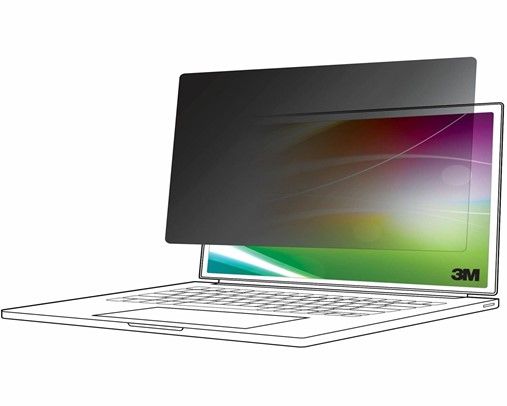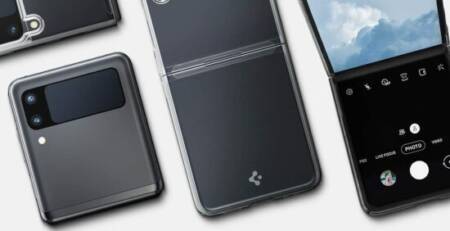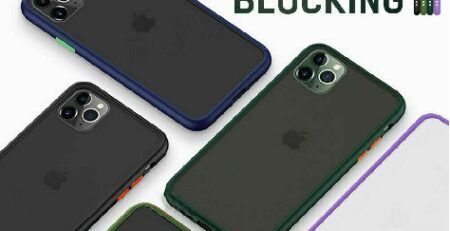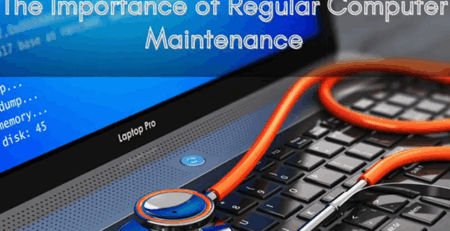Best Screen Protectors for Device: Choose Clear, Matte, or Privacy
Your smartphone’s display represents one of its most expensive and vulnerable components. A single accidental drop, pocket filled with keys, or encounter with beach sand can permanently mar that pristine screen you paid hundreds or even thousands of dollars for. Choosing the right screen protector isn’t merely about slapping any film onto your device; it’s about understanding protection technologies, material science, and your specific usage patterns to make an informed decision that balances protection, usability, and aesthetics.
At City Phones, we understand that Melbourne residents rely heavily on their devices for work, communication, and entertainment. That’s why we offer premium hydrogel screen protectors for all major phone brands including Apple, Samsung, Motorola, Oppo, and Huawei in three specialized variants: Clear, Matte, and Privacy. This comprehensive guide will help you understand exactly which screen protector type suits your needs and lifestyle, debunk common myths, and ensure you make the smartest investment in protecting your valuable device.
Understanding Modern Screen Protector Technologies
The screen protector landscape has evolved dramatically from the basic plastic films of the past. Today’s protective solutions employ sophisticated materials engineering and nanotechnology to deliver protection without compromising the premium feel and functionality of modern smartphones.
The Evolution from Tempered Glass to Hydrogel
Traditional tempered glass protectors dominated the market for years, and for good reason they offered 9H hardness ratings on the Mohs scale, excellent scratch resistance, and transparent clarity. However, tempered glass faces inherent limitations. Its rigid structure prevents edge-to-edge coverage on curved displays, it adds noticeable thickness (0.3-0.5mm), and upon impact, the protector shatters completely, requiring immediate replacement.
Hydrogel screen protectors represent the next generation of display protection technology. Manufactured from flexible thermoplastic polyurethane (TPU) materials, hydrogel protectors measure just 0.11-0.21mm thick barely perceptible to touch. This flexibility allows them to conform perfectly to curved screens, providing complete edge-to-edge protection that tempered glass simply cannot achieve. The gel-like composition acts as a shock-absorbing cushion, distributing impact energy across the entire surface rather than fracturing at the point of contact.
Perhaps most remarkably, quality hydrogel protectors feature self-healing properties that allow minor scratches and scuffs to disappear over time. The material’s molecular structure enables it to “remember” its original smooth state, gradually filling in and repairing superficial damage through natural heat exposure from device use or sunlight. This self-healing capability extends the protector’s lifespan significantly compared to tempered glass, which shows permanent damage from even minor scratches.
Phone Cases: Your Device's First Line of Defense

Material Science Behind Hydrogel Protection
The superior performance of hydrogel screen protectors stems from advanced polymer engineering. TPU materials exhibit both high tensile strength and exceptional elasticity, allowing them to absorb and dissipate impact forces without cracking. Research demonstrates that hydrogel protectors excel at cushioning drops and impacts, with their flexible nature preventing the transmission of shock directly to the underlying screen.
Modern hydrogel formulations incorporate multiple functional layers. The adhesive layer uses silicone-based compounds that bond securely to screens without leaving residue upon removal. An oleophobic coating resists fingerprints, oils, and smudges, keeping displays clean with minimal maintenance. Advanced hydrogel protectors also integrate anti-bacterial coatings and enhanced UV resistance to maintain clarity over extended periods.
Touch sensitivity remains a critical consideration for any screen protector. Premium hydrogel protectors maintain 100% touch responsiveness, with their ultra-thin profile ensuring that every tap, swipe, and gesture registers with the same precision as an unprotected screen. In fact, many users report that quality hydrogel protectors feel smoother than bare glass, enhancing the overall tactile experience.
The Three Types of Hydrogel Protectors: Clear, Matte, and Privacy
At City Phones, we offer three distinct hydrogel protector variants, each engineered for specific use cases and user preferences. Understanding the unique characteristics of Clear, Matte, and Privacy protectors ensures you select the optimal protection for your lifestyle.
Clear Hydrogel Protectors: Maximum Transparency and True-to-Screen Experience
Clear hydrogel protectors prioritize visual fidelity above all else, designed for users who demand the most accurate color representation and brightness from their displays. These ultra-clear protectors maintain the original screen’s appearance with minimal optical interference, ensuring that photos, videos, and graphics display with vibrant, true-to-life colors.
The transparency of clear hydrogel protectors typically exceeds 92-95%, rivaling or even surpassing tempered glass alternatives. This exceptional clarity results from precision manufacturing that eliminates air gaps between the protector and screen, preventing the optical distortion and rainbow effects sometimes observed with lower-quality products. Clear protectors use high-grade TPU materials specifically formulated to resist yellowing and discoloration over time, maintaining crystal-clear transparency throughout their lifespan.
Touch sensitivity reaches its peak with clear hydrogel protectors. The absence of additional coatings or textures means every touch registers with absolute precision, making them ideal for mobile gamers, artists using styluses, and anyone who demands the most responsive interaction with their device. Clear protectors also preserve the original oleophobic coating’s effectiveness, providing good though not exceptional fingerprint resistance.
Clear hydrogel protectors suit photography enthusiasts, video content creators, and anyone who prioritizes accurate color reproduction and maximum screen brightness. If you frequently work with images, watch high-definition video content, or simply prefer your screen to look exactly as the manufacturer intended, clear protectors deliver the most faithful representation of your display’s capabilities.

Matte Hydrogel Protectors: Anti-Glare Performance and Fingerprint Resistance
Matte hydrogel protectors address two of the most frustrating aspects of smartphone ownership: glare in bright environments and the constant accumulation of fingerprints and smudges. These specialized protectors feature a micro-textured surface that diffuses incoming light, dramatically reducing reflections and improving outdoor visibility.
The anti-glare technology embedded in matte protectors works by scattering light rather than reflecting it directly back to your eyes. This diffusion effect reduces the mirror-like reflections that plague glossy screens in bright sunlight or under overhead lighting, making your screen readable even in challenging conditions. Studies show that anti-glare protectors can reduce eye strain by up to 40% during extended use in bright environments, a significant benefit for users who spend long hours on their devices.
Fingerprint and smudge resistance represents another major advantage of matte hydrogel protectors. The textured surface naturally resists oil transfer from fingertips, keeping screens cleaner for longer periods. While glossy protectors show every fingerprint and require frequent cleaning, matte surfaces maintain a consistently clean appearance with minimal maintenance. The slightly rougher texture also provides a paper-like feel that many users prefer, particularly those who use styluses or write notes on their devices.
However, matte protectors involve trade-offs. The light-diffusing texture that eliminates glare also slightly reduces screen clarity and color vibrancy compared to clear protectors. Users typically notice a subtle decrease in sharpness colors appear slightly more muted, and fine details may lose some crispness. For most users, this trade-off proves worthwhile, particularly when using devices outdoors or in brightly-lit environments where glare otherwise makes screens nearly unreadable.
Matte hydrogel protectors ideally suit outdoor enthusiasts, people who frequently use phones in bright conditions, digital artists and note-takers who appreciate the paper-like writing feel, and anyone bothered by constant fingerprint accumulation. If you find yourself constantly wiping your screen or squinting to see content in sunlight, matte protection offers significant usability improvements.

Privacy Hydrogel Protectors: Confidential Viewing and Security
Privacy hydrogel protectors serve a specialized but increasingly important function: preventing others from viewing your screen content from side angles. In an era of ubiquitous surveillance, identity theft, and shoulder surfing, privacy protectors provide essential security for sensitive information displayed on your device.
These protectors employ micro-louver filtering technology essentially microscopic vertical blinds embedded within the protective layer. When you view your screen head-on (within approximately 60 degrees of perpendicular), the louvers allow light to pass through normally, providing clear visibility. However, at viewing angles beyond 30-60 degrees from center, the louvers block light transmission, causing the screen to appear darkened or completely black to observers at those angles.
The privacy effect proves remarkably effective in real-world scenarios. Anyone attempting to view your screen from beside you whether on public transportation, in coffee shops, during business meetings, or in crowded spaces sees only a dark, indecipherable display. This protection extends to both sides of your device, preventing shoulder surfing from any lateral angle. You maintain complete control over who views your screen content, from sensitive work emails to private messages to confidential financial information.
Privacy protectors typically combine their viewing-angle restriction with additional features. Anti-glare coatings reduce reflections, improving visibility in bright conditions while maintaining privacy. Some privacy protectors also incorporate blue light filtering, reducing eye strain during extended use and potentially improving sleep quality by limiting blue light exposure before bedtime. Like other hydrogel variants, privacy protectors provide standard scratch and impact protection while maintaining these specialized features.
The primary trade-off with privacy protectors involves a slight reduction in screen brightness typically 10-20% due to the filtering technology. This dimming proves noticeable in low-light conditions, though most users adjust quickly and consider it a reasonable compromise for enhanced privacy. Colors may also appear slightly less vibrant compared to clear protectors, though modern privacy films have significantly minimized this effect.
Privacy hydrogel protectors prove essential for business professionals handling confidential information, finance and healthcare workers accessing sensitive data, frequent travelers using devices in public spaces, and privacy-conscious individuals who simply prefer to keep their digital activities private. If you regularly work with sensitive information or simply value your privacy in public settings, these protectors provide invaluable peace of mind.

Debunking Common Screen Protector Myths
Despite their widespread use, screen protectors remain surrounded by misconceptions that prevent many users from making informed protection decisions. Let’s separate fact from fiction with evidence-based analysis of the most common myths.
Myth 1: Modern Smartphone Screens Don’t Need Protection
Perhaps the most pervasive myth suggests that modern display technologies like Gorilla Glass, Ceramic Shield, and other hardened glass formulations eliminate the need for screen protectors. While these advanced materials dramatically improve scratch and crack resistance compared to older displays, they remain fundamentally vulnerable to real-world hazards.
The Reality: Scratch resistance and scratch-proof represent entirely different properties. Gorilla Glass and Ceramic Shield rank approximately 6-7 on the Mohs hardness scale, providing excellent resistance to most everyday materials. However, materials harder than this threshold including sand (quartz rates 7 on the Mohs scale), certain metals, and other glass surfaces will scratch even the most advanced smartphone displays.
Beach sand represents a particularly insidious threat. A single grain of quartz sand in your pocket can create deep, permanent scratches across your display as you walk, sit, or simply carry your phone. Users who frequent beaches, work in construction or outdoor environments, or live in dusty areas face constant exposure to these harder-than-glass particles. Once scratches penetrate the oleophobic coating and surface glass, they become permanent and progressively worse over time.
Modern displays face an additional vulnerability: manufacturers engineer screens to be more shatter-resistant, but this improved drop protection comes at the cost of increased scratch susceptibility. The chemical treatments that make glass more flexible and less prone to shattering also make the surface slightly softer and more vulnerable to scratches. Users who never cracked screens on older phones often find their newer devices covered in micro-scratches from everyday use.
A quality screen protector costs $15-40 and takes five minutes to install. Screen replacement costs $200-500+ depending on the device model and typically requires sending your phone away for repairs. The economic calculus overwhelmingly favors prevention through screen protection.
Myth 2: All Screen Protectors Reduce Touch Sensitivity and Clarity
Many users avoid screen protectors believing they’ll compromise their device’s responsiveness and visual quality concerns that held validity a decade ago but no longer apply to modern protective solutions.
The Reality: Premium hydrogel screen protectors maintain 100% of your device’s original touch sensitivity and near-perfect clarity. Modern protectors measure just 0.11-0.21mm thick thinner than a human hair ensuring they don’t interfere with capacitive touch sensors or create noticeable separation between your finger and the screen.
Advances in adhesive technology ensure that quality protectors bond completely to displays with no air gaps, preventing the optical distortion and rainbow effects associated with older products. Premium hydrogel protectors achieve 92-95% transparency, making them virtually invisible once applied and preserving your display’s vibrant colors, sharp contrast, and deep blacks.
Touch sensitivity actually improves with some protectors. The smooth surface of quality hydrogel or tempered glass can feel more responsive than bare glass, particularly as displays accumulate microscopic scratches and oils over time. Many users report that their devices feel “new again” after applying a fresh screen protector, with smoother swipes and more accurate touch recognition.
The key lies in choosing quality products from reputable manufacturers rather than cheap alternatives. Bargain-basement screen protectors may indeed reduce sensitivity and clarity, but premium options from established brands maintain all the properties that make modern smartphones a pleasure to use.
Myth 3: Screen Protectors Prevent All Screen Damage
Some users believe screen protectors provide absolute, comprehensive protection against any type of damage an expectation that sets them up for disappointment when protectors fail to prevent catastrophic drops.
The Reality: Screen protectors excel at preventing scratches, scuffs, and damage from minor impacts, but they cannot guarantee protection against severe drops onto hard surfaces. They function as a sacrificial layer absorbing damage that would otherwise affect your display but physics limits their protective capabilities.
Hydrogel protectors particularly excel at absorbing and distributing impact energy from moderate drops, often preventing screen damage that would occur without protection. Their flexible, shock-absorbent nature means they don’t shatter like tempered glass, instead deforming to cushion impacts and then returning to their original shape. However, extreme drops from significant heights onto concrete or other hard surfaces can still result in screen damage despite protector presence.
Tempered glass protectors operate differently they’re designed to shatter upon significant impact, absorbing the force and ideally preventing it from reaching your actual screen. Many users report drops that shattered their tempered glass protector while leaving the underlying screen pristine. However, this protection isn’t absolute; severe impacts can crack both protector and screen simultaneously.
Screen protectors work best as part of a comprehensive protection strategy that includes a quality protective case. Cases protect the phone’s body, corners, and edges the most vulnerable impact points while screen protectors defend the display surface. This combined approach provides far more comprehensive protection than either element alone.
Myth 4: Screen Protectors Are Difficult to Install Without Bubbles
The prospect of bubble-filled, misaligned screen protector installations deters many potential users who fear they’ll ruin an expensive protector or damage their phone during application.
The Reality: Modern screen protectors feature dramatically simplified installation processes compared to older products, with many including alignment frames, cleaning kits, and bubble-removal tools that make perfect installation achievable for anyone. The key lies in proper preparation and following proven installation techniques rather than special skills or expertise.
Professional installation techniques involve several critical steps. First, thoroughly clean your device’s screen using the included alcohol wipe to remove all oils, fingerprints, and surface contaminants. Follow with a microfiber cloth to eliminate streaks and lint. Use dust-removal stickers to lift any remaining particles even a single dust speck will create a bubble.
The “steamy bathroom method” represents one of the most effective bubble-prevention techniques. Run a hot shower for several minutes to generate steam that settles airborne dust particles, then apply your screen protector in this dust-reduced environment. The humid air prevents dust from floating onto your freshly-cleaned screen during the critical installation window.
Alignment frames included with many premium protectors eliminate the guesswork from positioning. Simply place the frame over your device, align it with the edges and camera cutout, then lower the protector into place the frame ensures perfect positioning without requiring manual alignment.
For bubble removal, work from the center outward using a squeegee or credit card wrapped in a microfiber cloth. Apply firm, even pressure to push trapped air toward the edges where it can escape. Small bubbles often disappear on their own within 24-48 hours as the adhesive fully cures. For stubborn bubbles, gently lift the nearest edge and reapply, ensuring no new dust enters during the process.
Hydrogel protectors prove particularly forgiving during installation. Their flexible nature allows easy repositioning without damaging the adhesive, and their self-adhesive properties mean bubbles migrate out naturally over time even if some remain initially. Many users find hydrogel protectors easier to install than rigid tempered glass, with less risk of cracking during application.
Myth 5: Expensive Protectors and Cheap Ones Perform the Same
Budget-conscious consumers often wonder whether premium screen protectors justify their higher cost compared to inexpensive alternatives available online.
The Reality: Significant quality differences exist between premium and budget screen protectors, affecting protection levels, longevity, clarity, and user experience. While basic functionality may appear similar, the materials, engineering, and manufacturing processes differ substantially.
Premium protectors use higher-grade TPU materials with better transparency, more consistent thickness, and superior self-healing properties compared to budget alternatives. They incorporate multi-layer construction with oleophobic coatings, UV-resistant films, and precisely engineered adhesives that bond securely without leaving residue. Quality control ensures consistent dimensions, proper camera and sensor cutouts, and reliable performance across the entire product line.
Budget protectors often sacrifice these refinements. Users report issues including yellowing over time, reduced clarity that makes displays appear hazy or pixelated, inconsistent thickness that creates touch sensitivity dead zones, and adhesives that either fail to stick properly or leave permanent residue upon removal. Some cheap protectors even interfere with fingerprint sensors, face recognition, or proximity sensors due to imprecise manufacturing.
Durability represents another crucial difference. Premium hydrogel protectors from reputable manufacturers maintain their properties for months or even years, with self-healing capabilities that keep screens looking pristine throughout their lifespan. Cheap alternatives may degrade within weeks, developing permanent scratches, yellowing, or peeling at the edges.
The cost difference often proves minimal when considering longevity. A premium protector costing $30-40 that lasts a year provides better value than a $10 protector requiring replacement every few months. Factor in potential screen repair costs from inadequate protection, and premium protectors represent clear economic sense.
How to Choose the Right Protector for Your Lifestyle and Device
Selecting the optimal screen protector involves matching protection type to your specific usage patterns, environment, and priorities. This decision framework helps identify which protector variant best serves your needs.
Assess Your Primary Use Cases
Begin by honestly evaluating how and where you use your smartphone most frequently. Outdoor enthusiasts, construction workers, and anyone spending significant time in bright sunlight benefit most from matte protectors, which eliminate the glare that makes screens unreadable in these conditions. The anti-glare properties prove invaluable when using navigation apps while hiking, checking work emails at outdoor job sites, or simply browsing social media at the beach.
Urban commuters and business professionals working in public spaces should prioritize privacy protectors, which prevent shoulder surfing during train rides, coffee shop work sessions, or crowded elevators. Anyone handling sensitive information financial data, healthcare records, confidential business documents, or simply private communications gains essential security from privacy screens that allow only direct viewers to see displayed content.
Content creators, photographers, and video enthusiasts require clear protectors that preserve accurate color representation and maximum brightness. If your work involves editing photos, reviewing video footage, or creating visual content where color accuracy matters, the crystal-clear transparency of clear hydrogel protectors ensures you see your content exactly as intended.
Mobile gamers and stylus users also benefit from clear protectors, which provide the most responsive touch sensitivity and smoothest surface for precision interactions. The absence of texturing or filtering means every tap, swipe, and gesture registers with millisecond precision crucial for competitive gaming or detailed digital artwork.
Consider Your Environment and Handling Habits
Environmental factors significantly influence which protector type serves you best. Beach-goers and anyone frequently exposed to sand absolutely need screen protection, as quartz sand represents one of the few materials capable of scratching modern smartphone glass. The self-healing properties of hydrogel protectors prove particularly valuable in these sandy environments, as minor scratches disappear naturally rather than accumulating into visible damage.
Clumsy individuals with documented histories of dropping phones should evaluate whether hydrogel’s superior shock absorption or tempered glass’s sacrificial shattering better suits their needs. Hydrogel excels at moderate impacts, distributing energy and preventing damage that would crack unprotected screens. For severe drops, some users prefer tempered glass that shatters dramatically but often saves the underlying screen though modern ceramic shields and improved drop protection have reduced this advantage.
Work environment matters significantly. Healthcare professionals benefit from anti-bacterial hydrogel coatings and privacy protection when accessing patient records. Teachers and presenters appreciate matte protectors that remain readable under overhead lighting and projectors. Office workers in open-plan spaces gain privacy from side-angle filtering.
Match Protection to Your Device’s Display Technology
Device-specific considerations influence protector selection. Phones with curved displays including most flagship Samsung, Huawei, and premium Oppo models require flexible hydrogel protectors for complete edge-to-edge coverage. Tempered glass cannot conform to curved screens, leaving vulnerable edges exposed and creating unsightly gaps.
Devices with under-display fingerprint sensors require careful protector selection. Modern hydrogel protectors designed specifically for these devices maintain sensor functionality, but some older or poorly designed protectors interfere with fingerprint recognition. City Phones ensures all our hydrogel protectors are engineered for compatibility with the latest biometric security features across all major brands.
High-refresh-rate displays (90Hz, 120Hz, or higher) demand protectors that maintain full touch sensitivity to preserve the smooth, responsive feel these screens provide. Premium hydrogel protectors ensure your expensive high-refresh display continues feeling buttery-smooth and responsive.
Screen Cleaning: The Critical Pre-Installation Step
Screen cleanliness represents the single most important factor in bubble-free installation. Use the provided alcohol wipe to thoroughly clean the entire screen surface, removing all oils, fingerprints, and surface contaminants. Wipe in overlapping horizontal passes to ensure complete coverage, then follow with vertical passes.
Immediately dry the screen with the microfiber cloth using straight, overlapping strokes. Circular motions can redistribute oils rather than removing them, so maintain directional wiping patterns. Inspect the screen under bright light at multiple angles to verify complete cleanliness any remaining residue will create bubbles or prevent proper adhesion.
Use dust-removal stickers aggressively across the entire screen surface. Gently press the sticky side against the glass and lift, capturing any remaining particles. Repeat this process multiple times, ensuring you cover every millimeter of screen surface. A single dust particle will create a permanent bubble, so thorough dust removal proves essential.
Why City Phones Hydrogel Protectors Represent the Smart Choice
At City Phones, we’ve spent years repairing smartphone screens across Melbourne. This hands-on experience provides unique insight into what types of damage occur most frequently and which protection methods prove most effective in preventing costly repairs.
Our professional-grade hydrogel screen protectors deliver the same quality protection used by repair technicians worldwide. We offer three specialized variants Clear, Matte, and Privacy ensuring every customer finds the optimal protection for their specific needs and usage patterns. Our protectors accommodate all major phone brands including Apple, Samsung, Motorola, Oppo, and Huawei, with precise cutouts for cameras, sensors, and biometric security features.
The City Phones difference extends beyond product quality. Our knowledgeable staff provides expert guidance on selecting the right protector type for your lifestyle, device model, and protection priorities. We can professionally install your protector if you prefer expert application, or provide detailed instruction for confident DIY installation.
Most importantly, our hydrogel protectors represent genuine investment in device longevity rather than merely another accessory purchase. Quality screen protection prevents the scratches, scuffs, and damage that diminish your device’s resale value and your daily user experience. A pristine screen makes everything better from reading text to viewing photos to enjoying video content.












Leave a Reply